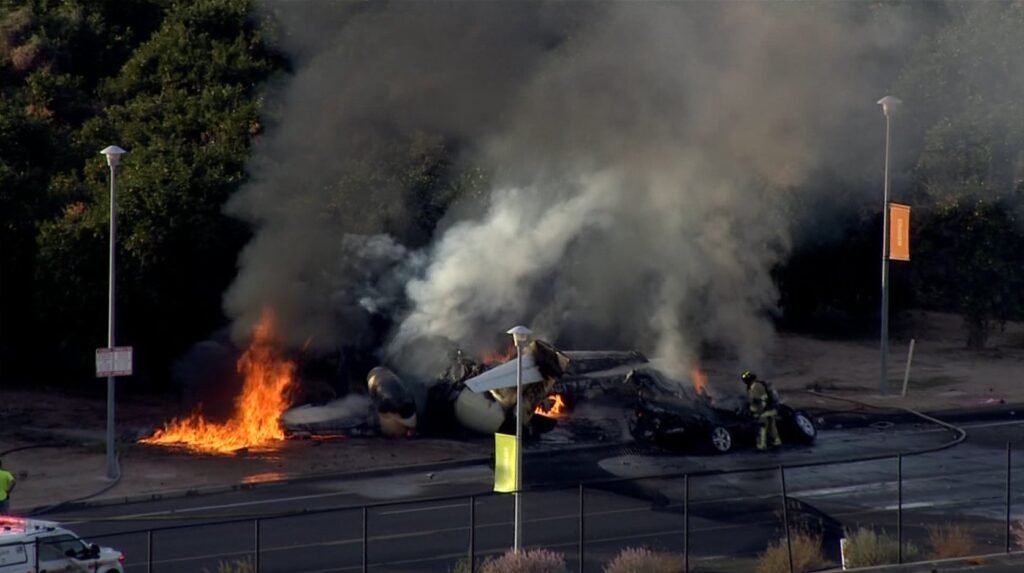What are Sterile Flight Deck Procedures ?
“Critical phases of flight”
Hello friends ,
You are welcome again in today’s new blog.
Today we will be talk about a new and interesting things.
Every pilot follows a variety of rules, procedures and regulations during their daily operations. One of the principles pilots follow several times during each flight is named the Sterile landing deck Procedures rule. Have you heard of this important rule?
In Aviation The term Sterile flight deck Procedure rule describes a period of some time when the flight crew members must not be disturbed by non-flight related matters in flight.
In general terms critical phase of flight include where all ground operations
involving like aircraft taxing, take-off and landing and all other flight operations conducted below flight level 10,000 feet (3050 meters) where except cruise flight.
Critical phases of flight is define as the phases of a flight in which the flight crew is busiest, such as during take-off and landing and instrument approaches and the When many complex tasks are performed in a short time interval, distracting events could cause errors and significant reductions in the quality of work performed.
Then pilots must entirely specialise in their essential operational activities and avoid any unrelated disturbances. They are even barely allowed to speak to every other.
Mostly In flight duration Pilots follow this rule during the attention-requiring procedures of taking-off, landing, taxiing or when the aircraft flies at the altitude below 10,000 feet (3,050m).
It means, all the cockpit pictures you’ve seen posted on social media were taken when the aircraft was flying on the cruise mode at the altitude of at least 10,000 feet and/or higher.but in india DGCA is not allowed for this.
Generally Most of the aviation regulations were created or updated following accidents .
As you know that The Sterile landing deck Procedure is not any exception – the rule was created in response to the crash of Eastern Air Lines flight 212 in Charlotte Douglas International, the USA, in 1974. One of the causes of this accident was that the pilots were distracted in plan to visually spot the Carowinds funfair tower while flying at a coffee altitude.
The Sterile landing deck Procedure was created within the USA and approved by the FAA, later it had been added to EASA regulations. There is no rule without exceptions. When can the flight crew be disturbed within the previously mentioned cases? The flight attendants can break the silence in the cockpit in case of emergency.
Japan Airlines listed the situations when their flight attendants got to contact the pilots at the altitude below 10,000 feet: flight-attendant-to-pilot communication during take-off and landing.
Such situations included:
● Any outbreak of fire;
● The presence of smoke in the cabin;
● Any abnormality in the attitude of the aircraft during take-off and landing;
● The existence of any abnormal noise or vibration, and;
● The observance of any fuel or other leakages.
The Federal Aviation Administration (FAA) also noted that: Many flight attendants don’t have a transparent understanding of what “sterile cockpit” means.
Situations That Warrant Sterile Cockpit Interruptions -:
• Fire, burning odor or smoke in cabin;
• Medical emergency;
• Unusual noise or vibration;
• Auxiliary power unit (APU) torching;
• Fuel or other fluid leakages;
• Exit door unable to be armed/ disarmed;
• Extreme temperature change;
• Evidence of de-icing problems;
• Suspicious, unclaimed bag or package;
• Cart stowage problem; and,
Situations That Do Not Warrant Sterile Cockpit Interruptions -:
• Non-safety-related logbook items;
• Meal references;
• Gate information;
• Misconnected baggage;
• Catering problems;
• Passenger accommodations such as wheelchairs; and,
• Rude passengers
Flight attendants got to tend specific information about what sort of information merits contacting flight crewmembers during the sterile period. Hesitancy or reluctance on the a neighborhood of a steward to contact the flight crewmembers with important safety information thanks to a misconception of the sterile cockpit rule is
potentially even more serious than the unnecessary lots of distraction caused by needless violations of the sterile Cockpit.
You can find The sterile landing deck procedures were published in Regulation (EU) 2015/140 as an amending regulation to (EU) No 965/2012 on air operations.
Also EASA published the associated AMC and GM with ED Decision 2015/005/R.
Communication and Coordination Between Flightcrew Members and Flight Attendants -:
As we know that The Airbus “Flight Operations Briefing Notes, Cabin Operations, Effective Briefings for Cabin Operations” state, “The aim of briefings is to establish a clear plan of action, communicate and pass the information, to ensure there is a common understanding between all flight and crewmembers.
We all are know that the work of the flight crew and cabin crew is very different in nature, the flight crew and the cabin crew work as one crew, with a common goal, the safe completion of the flight and keep safe the passenger in any situation. This includes the sharing all safety related information from the cockpit to the cabin, and from the cabin to the cockpit is essential to the safety of the flight.”
The preflight briefing should include the following topics, but are not limited to:
• Crew introductions/crew complement;
• Passenger count;
• Weather conditions;
• Security information;
• Aviation safety inspector (ASI), Federal Air Marshal (FAM), Federal Flight Deck
Officer (FFDO), Law Enforcement Officer (LEO), or jump seat riders;
• Preflight inspections, writeups, or maintenance issues;
• Flight deck entry/exit procedures and jump seat and oxygen operation;
• Issues related to taxi, takeoff, and landing (e.g., short/long taxi); and
• Chimes used for normal and emergency signals.
LESSONS LEARNED THROUGH RELEVANT ACCIDENTS AND INCIDENTS
1】 A Fokker F28-1000 crashed on takeoff from Dryden Regional Airport.
During the stop in Dryden, heavy snow fell and ice accumulated on the wings. Passengers
questioned the cabin crew about snow accumulations. However, these questions were not passed on to the flightcrew. The company’s procedures, at the time of the accident, discouraged communication between the flightcrew and cabin crewmembers regarding operational issues.
Relaying questions from the passenger cabin would are considered outside the scope of
cabin crew duties, and was therefore not conducted.
In a fully functional safety-related information from passengers or other crewmembers should be encouraged, as cabin crewmembers are considered to be a CRM resource, and within operational protocols (such as communicating during takeoff roll) should be expected to spot a possible safety issue to the flightcrew.
An off-duty pilot (passenger) was also concerned about the snow, but did not inform the cabin crew or flightcrew out of professional courtesy.
On the second rotation, the airplane lifted off the runway. Noticed that altitude was gained and the aircraft settled in a nose-high attitude, striking trees. The aircraft crashed, and came to rest in a wooded area and caught fire. The pilots, 1 flight attendant, and 21 passengers were killed. Forty-four passengers and one crewmember survived with injuries.
REVIEWS -:
1. Flightcrew communications regarding safety issues should be open and effective.
2. Each crewmember must clearly give and receive communication in such a way that the flight
safety decisions can be made appropriately.
2】January 8,1989
A Boeing 737-400 left Heathrow Airport for Belfast International Airport with 8 crewmembers and 118 passengers on board.
At the climbing phase , the outer panel of one blade in the fan of the No. 1 (left) engine detached.
During the descent while attempting to complete checklists, the crew was interrupted numerous times by air traffic communications, and did not complete an evaluation of their situation.
A proper assessment of their flight situation may have resulted in discovering the wrong engine had been shut down and possibly avoiding the accident. Thirty-nine passengers died in the accident and a further eight died later from their injuries.
REVIEWS-:
1. Three cabin crewmembers had observed flames coming from the No. 1 engine, but did not communicate this information to the flightcrew. In a fully functional CRM environment,
safety-related information from passengers or other crewmembers should not be discouraged.
Cabin crewmembers should be considered as a CRM resource, and within operational
protocols (such as communicating during emergency situations), be expected to identify a potential safety issue to the flightcrew.
2. Adherence to rigorous flight deck discipline and operational procedures, including completion of checklists, is an essential component of effective CRM.
3. Flightcrew communications regarding airplane safety readiness should be open and effective.
It’s also must ensure that Each crewmember must clearly give and receive communication in such a way that the flight safety decisions represent the best product of this open, two-way communication.
Thanks for reading.
The aviation
0 Comments
Leave a comment
You may also like
The Aviation Blog
ATC Tower – Why Do Air Traffic Control Towers Have Slanted & Black Color Windows :The Aviation
Why Do Air Traffic Control Towers Have Slanted & Black Color Windows? Hello everyone, Welcome to my new blog ,
The Aviation Blog
Do You Know Why A320-family Aircraft is the Bestselling Narrow-body Aircraft in The World : The Aviation
Do You Know Why A320-family Aircraft is the Bestselling Narrow-body Aircraft in The World. The A320 Family is the






Aviation Quiz Master
May 25, 2023Very nice , keep it up brother